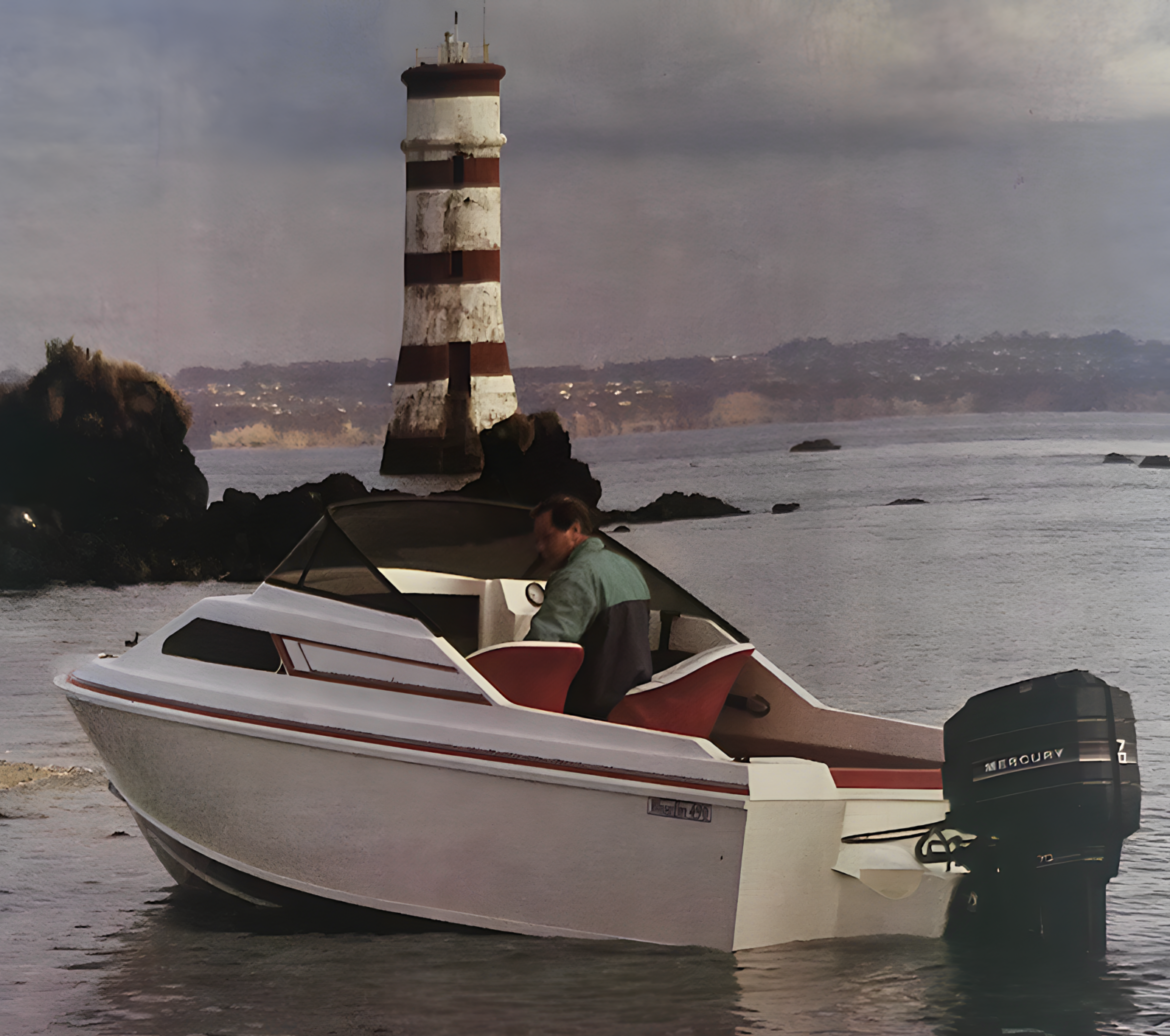In the development of New Zealand’s trailer boat industry during the 1980s, several transformative trends reshaped the local trailerboat scene, including a pivotal shift towards fiberglass and alloy construction. This marked a departure from traditional wooden hulls, in response to advancements in materials and manufacturing techniques. This era also witnessed the increase in the popularity of recreational boating, fuelled by increasing disposable incomes and an increased appetite for leisure pursuits. Many prominent brands (read on) emerged, many still here today. Each contributing distinctive designs and features to cater to diverse preferences. Innovations in design, not only to improve performance but also to facilitate overnight stays, expanding the opportunities for recreational activities. The spectrum of trailer boats expanded significantly, encompassing small runabouts to spacious cabin cruisers, offering versatility for fishing, water skiing, and family outings. At the same time, technological advancements in marine engineering, exemplified by more efficient outboard engines and navigation equipment, improved the performance and safety standards of trailer boats.
In addition, New Zealand’s trailer boats gained traction on the global stage, with exports to destinations such as Australia and the Pacific Islands further contributing to the industry’s growth, it certainly was exciting times.
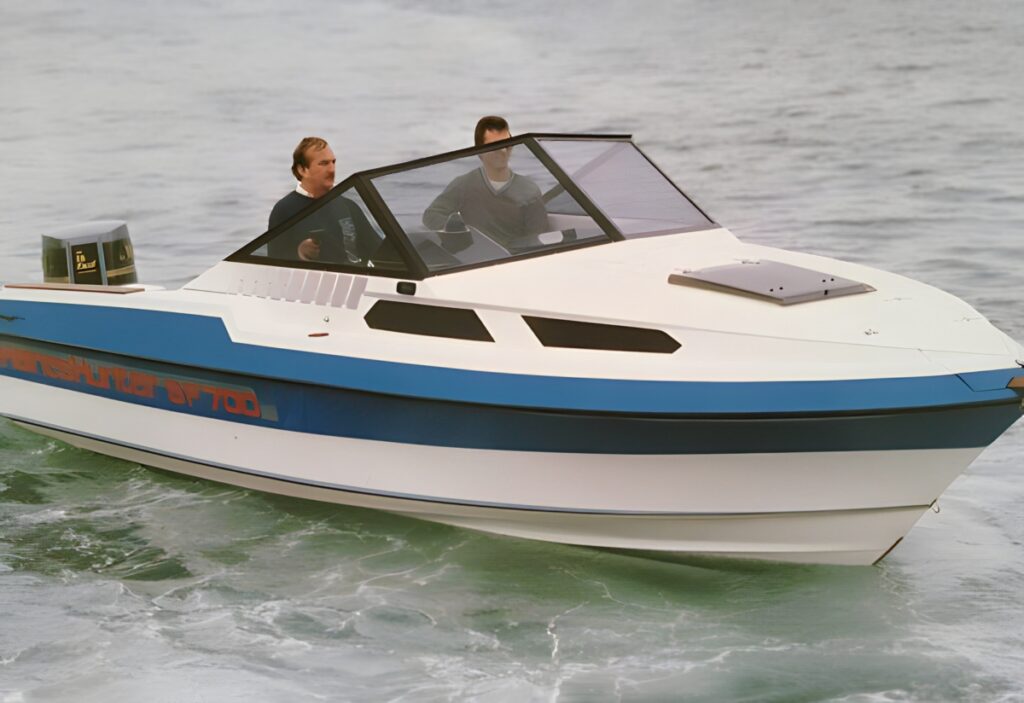
1980
- Les Miller, owner of Miller Moyes Boating Centre, had enjoyed a long friendship with Sandy Sands, whose company Seacraft Ltd had grown, after its founding in 1946, from wooden boatbuilding to manufacturing some of its own fibreglass models. Les was approached by Sandy with a proposal to merge their two companies, to make the best use of their complementary skills – Sandy’s in manufacturing and Les’s in retailing. Whereby he and Sandy Sands would form a new company, Miller Moyes Seacraft Ltd, to take over the Haines Hunter moulds from Fibreglass Moulders Ltd and started manufacturing and retailing Haines Hunter boats in New Zealand, with their first model being the Haines Hunter SF700.
- Markline became New Zealand’s largest production boat builder of large cruisers and launches, although eventually stepping away from the trailer boat market, it did start in the small boat arena. One of the early boats was the Markline 776 Express Cruiser that had the same hull as the original Marksply 22. With a $45,000 drive away price tag in 1980, it was aimed at the top echelon of the trailer boat market.
- The Buccaneer 5.6m Runabout was introduced.
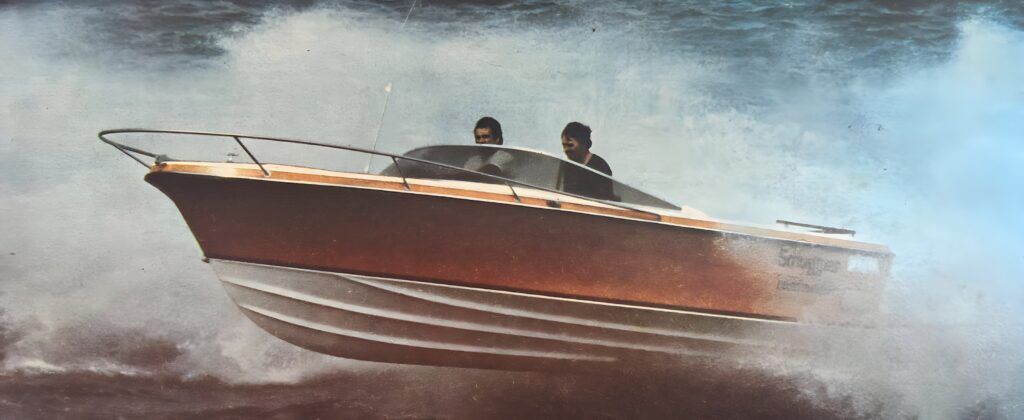
1981
- Buccaneer Pleasure Craft Ltd introduced its 4.9m Runabout and Cuddy models.
- Sea Nymph launches the popular Commander.
- The Smuggler Reefrunner was voted Australian Powerboat of the year.
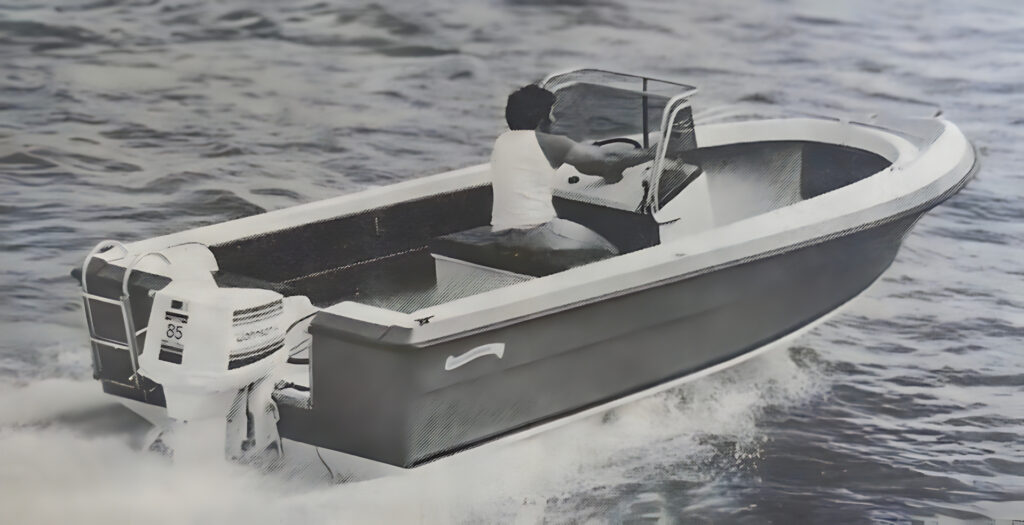
1982
- Buccaneer Pleasure Craft Ltd introduced the 5.6m Centre Console and 5.6m Cuddy.
- New Zealand Water Ski Association and the New Zealand Barefoot Association both choose the Steadecraft 166 for their tournament boat.
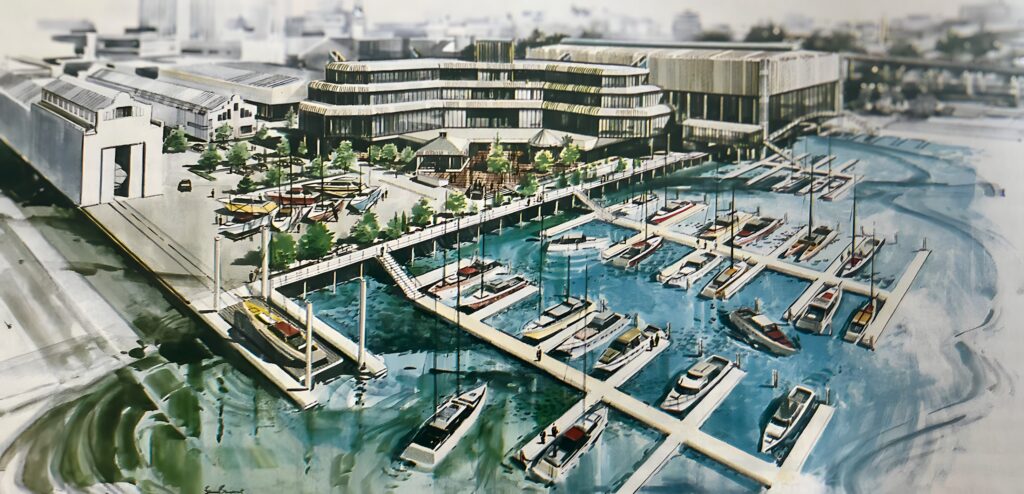
1983
- Marco Boats, builders of aluminium runabouts, and later cuddies and hardtops, was set up in Morrinsville, where it remains to this day.
- Aluminium boats increased in popularity and slowly began to take more market share from fibreglass as a powerboat construction material.
- Auckland Harbour Board’s redeveloped Westhaven boat harbour was officially opened, costing $9.7 million.
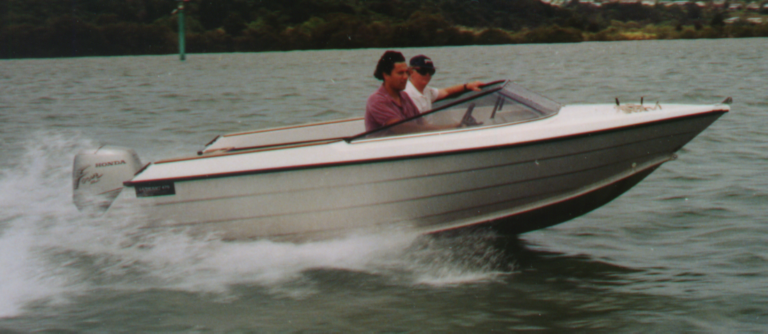
1984
- Miller Moyes/Seacraft Ltd introduced the Haines Hunter 565L, a family cuddy cabin boat suitable for outboards of around 140hp. It proved to be very a very popular model.
- After the devastation in the powerboat industry caused by the infamous Muldoon 20% sales tax imposed in July 1979, Peter Gribble and Kim McDell resurrected Sea Nymph by revamping some of their old models and after doing a deal with the Nicholls brothers of Queensland, four of the Nicholls’ Cruisecraft models. These were the 5.06m Stinger runabout and the Regal cuddy cabin, and the 5.67m Hustler bowrider and Explorer cuddy cabin. They sold well and re-established Sea Nymph as a major brand in the NZ powerboat market.
- Gavin Child started building Lazercraft Boats in Dunedin, the brand still lives on through Family Boats.
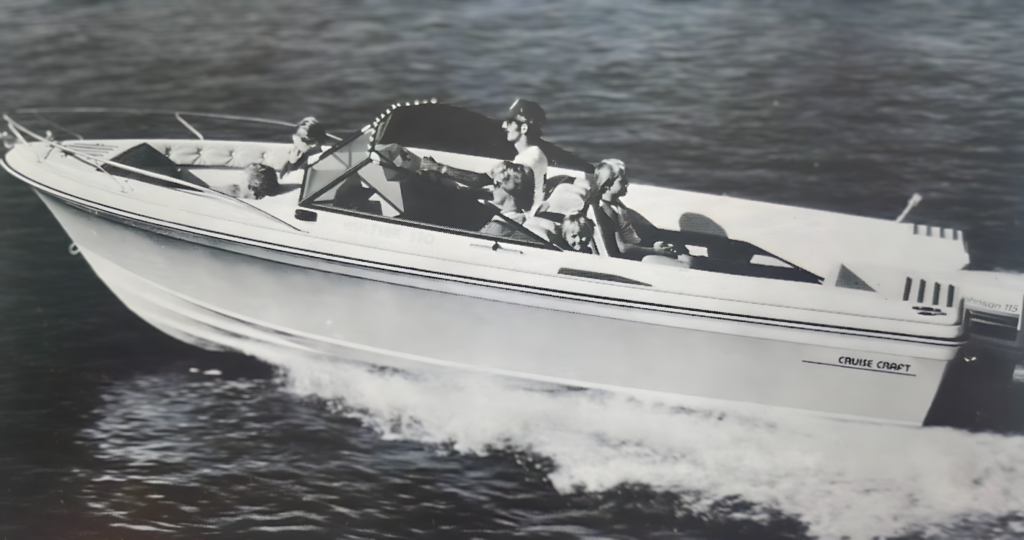
1985
- After four years of R&D, Suzuki introduced its new 150hp and 200hp 2.7-litre V6 outboards at the Auckland Boat Show in October. Previously, Suzuki’s range had topped out at the 4-cyl.-in-line 140hp model.
- Kiwi powerboat industry was thriving, experiencing its highest level of trading in a decade. Sea Nymph Hustler was one of the many new models released over this period.
- Ramco Boats was founded in 1985 by Bill Mackrell, a Waikato plumber wanting to produce affordable aluminium boats. The brand today is built by Icon Marine in Rangiora
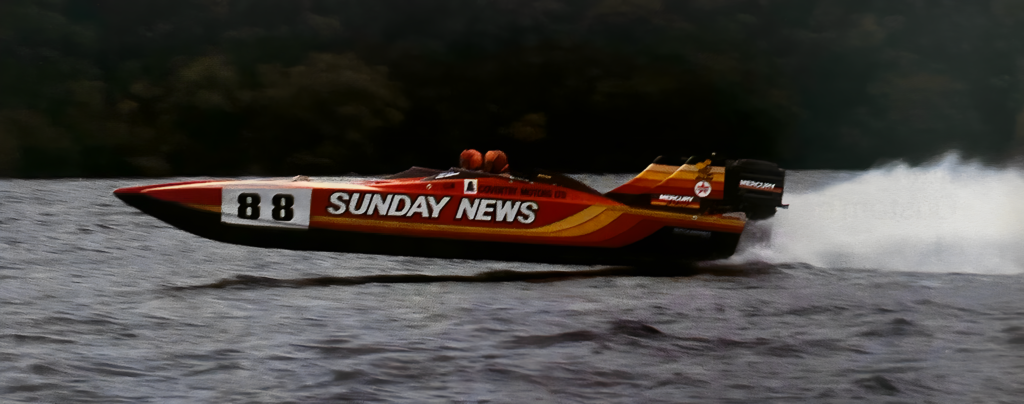
1986
- Our own, late Barry Thompson, and Glen Urquhart took their twin Mercury-powered catamaran Class III powerboat racer Sunday News to the UK. When their European and Argentinian competitors saw the pitch of the Kiwis’ propellors was, at 32 inches, four inches greater than they were running, they were amazed. The Kiwi boat, with its motors mounted considerably higher than those of its competitors, easily won the first two races, whereupon team manager Ron Archer calculated that they needed only to come fourth or better in the third race in order to take the World Class III D title. So, Thompson and Urquhart took it easy, making sure they finished, and came third, taking the title easily. The team from Argentina came second, for a Southern hemisphere domination.
- On 11 December, Barry Thompson and Glen Urquhart’s Class III powerboat racer Sunday News nosedived at 150km/h and flipped on Auckland’s Waitemata Harbour during the second race of the World Offshore Powerboat Championships. Thompson was critically injured, suffering multiple injuries including a fractured skull. The Auckland Star reported “Thompson was sedated for almost a week and woke the Wednesday after the accident. “I’ve probably come as close as anyone to death,” he said. “I died in the rescue helicopter and again when I got to hospital.” The hospital doctors told his wife that he had only a 50% chance of survival.
- Buccaneer Pleasure Craft Ltd on a roll with their new models, introduced the 490 Sport.
- OMC (Johnson & Evinrude) introduced the world’s first production V8 outboard, a loop-charged carburetted 2-stroke producing a then-massive 275hp.
- 1986 saw the release of the Haines Hunter SF535 – considered by some to be NZ’s biggest selling trailer boat ever.
- Yamaha introduced the world’s first counter-rotating pairs of outboards; available models were either 150hp or 200hp carburetted V6s.
- In 1986, having seen a need in the recreational boating market for high performance composite craft, SeaforceTM set about refining their first design. The result was the successful 16ft SeaforceTM Utility.

1987
- Lance and Bronwyn Fink started Tristram Marine in Hamilton. They named their company after their first son, who was born that year. The first boat they manufactured was the Tristram 28, an 8.53m long x 2.49m beam, cedar-cored sandwich hull with epoxy fibreglass skins both inside and out. It was finished with teak decks and interior trim and was powered with a Volvo 200hp diesel duoprop sterndrive. It sat on a tripleaxle trailer and its towing weight was 4.2 tonnes.
- Steve McLay, who had a manufacturing engineering business in Milton, Otago, having made a oneoff aluminium boat for himself, decided to start manufacturing aluminium boats. First came the McLay B1800 (5.5m). McLay Boats have become one of the most popular alloy brands on the market today.
- Well-known powerboat racing identities Ian Gallop, Ron Archer and Gary Selby teamed up to produce the Exocet 24, a 7.3m deep-V cuddy cabin V6 outboard-powered sports/fishing boat. They had used as the hull plug the race boat Raro, a Formula 233 made in Australia by the Haines brothers. The Formula 233 was designed by Walt Walters of Miami and produced by Thunderbird Products Corporation in Miami from the early 1960s. Its hull has been ‘flopped’ (copied) more than any other in the history of fibreglass powerboats worldwide.
- Reflex Products Ltd teamed up with John Haines of Brisbane to build “Haines Signature” boats under contract. By 1990 Reflex products had secured the full manufacturing and distribution rights for “Haines Signature” boats in New Zealand.
- Buccaneer Pleasure Craft had a very busy year, introducing no less than four new models – the 450 Cabin ET, the 450 Sport ET, the 450 Sport Cabin ET, and the 560 Cuddy Sport ET.
- In a backstreet workshop in Invercargill, New Zealand, Paul Adams and Bruce Dickens built the first rigid hulled aluminium chambered boat – a Stabicraft 3.5 dinghy called the ‘Ally Duck’.
- Rayglass was taken over by Tony and Vicki Hembrow and production began on the first-ever and popular Rayglass Sports Cruiser 670.

1988
- Roger Jones built alloy runabouts for several years, earning a renowned reputation for uncompromising quality. His latest addition to the Bluefin range was a highly successful blend of the trusted 490 alloy hull with a brand-new GRP cabin deck. Bluefin Boats are still around today and available through Sportcraft Marine.
- Haines Hunter unveiled the 445R at a total price of $14,988, which included a 40hp Yamaha outboard and trailer, ready to tow away.
- Westpark, Gulf Harbour and Pine Harbour marinas open.
- Yet another busy year for Buccaneer Pleasure Craft, releasing the Buccaneer 510 Sport ET, the 510 Cabin ET and the 560 Cabin ET.
- The Kiwi-Kraft brand grew from one man’s love of diving, fishing and hunting – his name is Rodney Harris. In 1988 Rodney saw a need for a safer, better performing aluminium boat. One that also appealed to the eye KiwiKraft was born. The brand originated in Invercargill and is still built there today.
- Southern Pacific was founded and started production, the fabric was glued together by hand, transoms were crafted from plywood, and the yard operated out of Browns Bay.

1989
- McLay Boats introduced the B1650 (5m) and later that year the B2000 (6.1m).
- Buccaneer Pleasure Craft introduced two new models – the Buccaneer 605 Cabin ET and the 605 Cuddy Sport ET.
- Sanctuary Cove was selected as the venue for the 1989 Queensland International Boat Show, the event continues at the same location under the name Sanctuary Cove International Boat Show. Over the years, numerous Kiwi trailer boat manufacturers have showcased their products at this prestigious event.


